How To Market With Mobile During a Downturn [VIDEO]

It’s common for companies to slash their budget during times of economic uncertainty. According to a recent survey, companies reported reducing marketing budgets by about 6% in 2021. But is it the right thing to do?
In 1999, Tony Hiller analyzed the marketing and advertising data of 1,000 U.S. and European firms. The firms were split into three groups based on whether they increased marketing spend during an economic downturn. The first group decreased their marketing spend. The second maintained it. The third increased it.
As a result, when the economy recovered, the first group’s market share dropped by 0.8%. The second group’s profits increased by 0.6%. Meanwhile, the third group — companies that increased their marketing spend during the downturn — increased their profits by 4.3%.
So, the lesson is if you can increase your marketing budget — or at least keep it flat — you can get a leg up on the competition well into the future.
Here are four strategies to utilize instead of cutting your marketing budget, taken from the App Growth Summit SF 2022 recession-proof mobile marketing presentation [see the full video below].
- Double down on ROI
- Rethink segmentation and incentives
- Focus on customer experience and customer journeys
- Move to more sustainable channels
Double down on ROI
Instead of cutting budgets, refocus your investment on the things that bring the highest ROI for your business.
Advertising, which many businesses rely on for growth, doesn’t always have the best ROI. According to our research, organic channels have a higher click-to-purchase rate, up to four times higher than paid ads, and much higher retention.
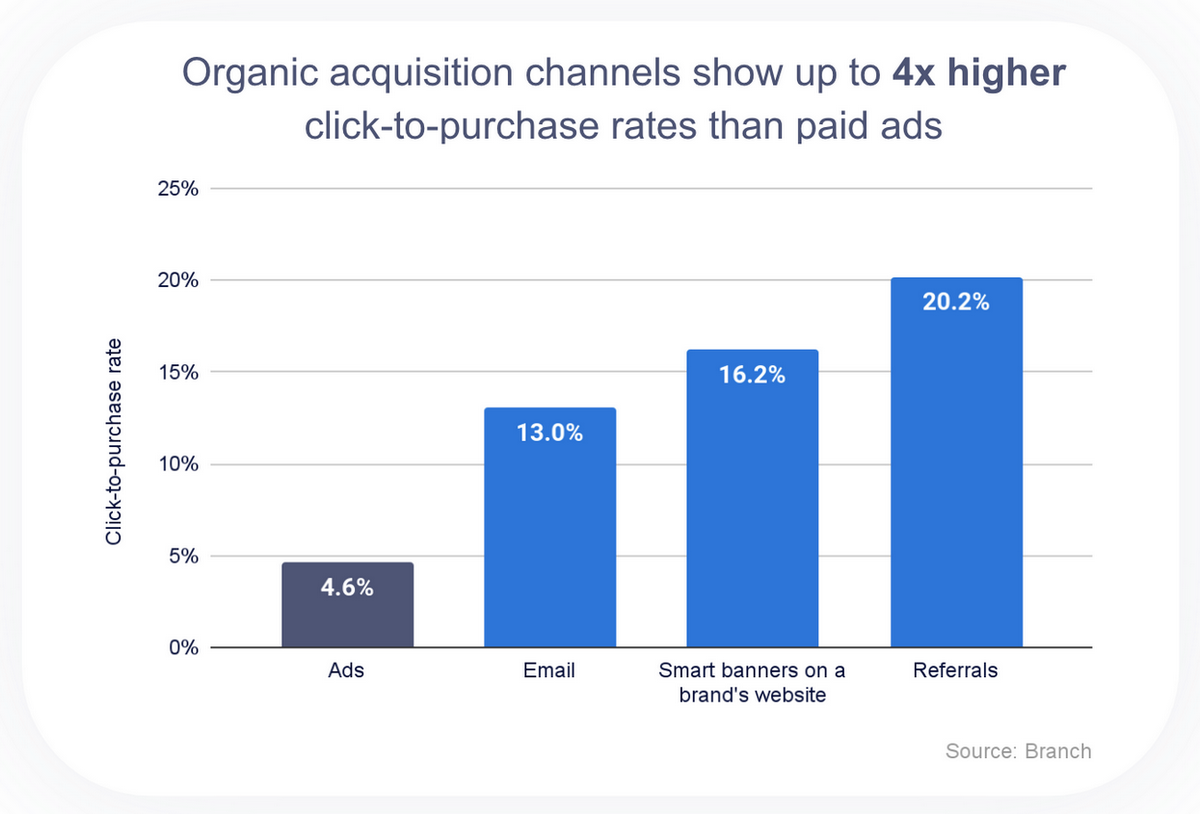
When you’re considering what programs or channels to double down on during a downturn, it’s important to look beyond the initial install and understand retention. You can even compare performance over time using cohorts to learn how and when users were acquired and when they purchased or signed up. Then track those groups over time to really know which channels have a better long-term ROI. It won’t be enough to just compare paid channels or organic channels to evaluate what’s working; it’s vital to compare all channels to see what’s happening across the full funnel.

ROI beyond CPI and ROAS
Often, businesses use cost per install (CPI) or return on ad spend (ROAS) as the primary measure of an app download’s dollar value. But the real value is actually much higher — especially as time goes on.
Some advantages are often overlooked. Company savings that result from people using your app for support or customer service. Loyalty and the instant brand connection that app users have. Referral virality. Taking all of this into account, an app user is generally worth three times a non-app user.
So when you’re thinking about doubling down on ROI, remember that during a recession, it’s often more about cost savings to the business and incremental revenue than it is about ad spend.
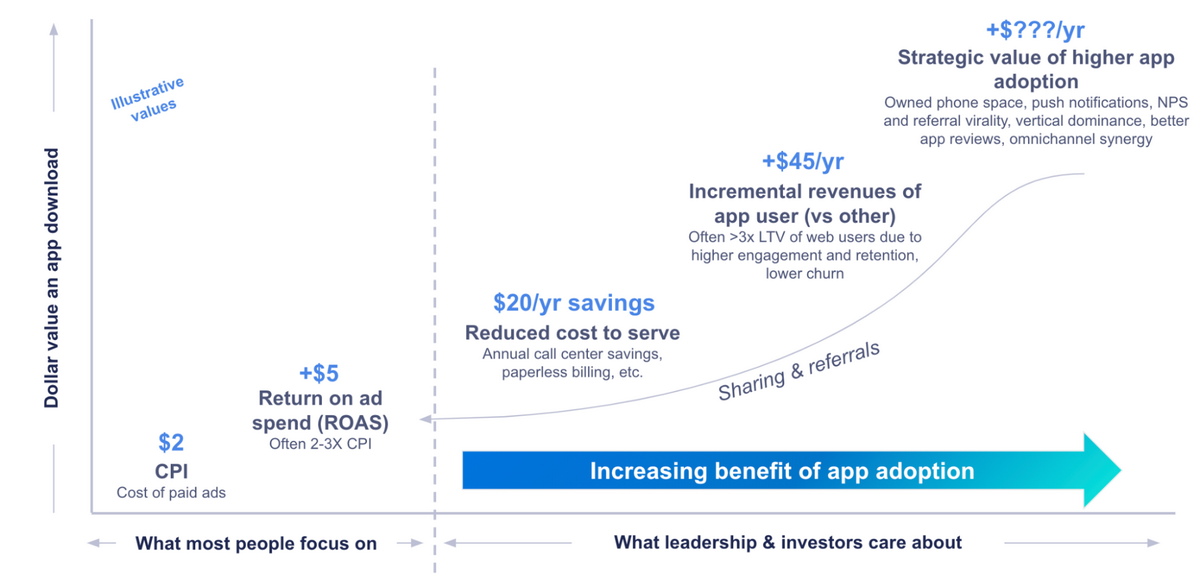
Rethink segments and incentives
You probably already use segmentation in your marketing or product plans. But consumer psychology and behaviors can change during a recession, so your segments might not make as much sense. According to Harvard Business Review research, during a downtown, consumers tend to fall into four major segments:
- The “slam-on-the-brakes segment” reduces, postpones, decreases, or substitutes all types.
- “Pained-but-patient consumers” are optimistic about the long term but less confident about maintaining their standard of living in the near term. If news gets worse, they will increasingly move to the slam-on-the-brakes segment.
- “Comfortably well-off consumers” consume at their normal levels, though they are usually more selective about what they buy.
- The “live-for-today segment” are unlikely to change their behaviors unless they become unemployed.
While the majority of consumers fall into the pained-but-patient category, you can rethink incentives for every segment in many of the same ways. Try offering a lower-priced option; rewarding loyal customers even if they are spending less; and advertising products as morale boosters or as affordable compared to luxuries.
You can also rethink how you’re reaching these audiences with the right offers.
How to incentivize on mobile
The most effective incentivization strategy on mobile is to provide app-only offers. This incentivizes people to not only spend money with you, but also to download the app — and as we’ve mentioned before, app users tend to hold much higher value than non-app users.
But user experience matters. KFC, for instance, puts the app-exclusive deal of 10 tenders for $10 into a user’s cart in just three clicks. The offer is preserved at each step until checkout.
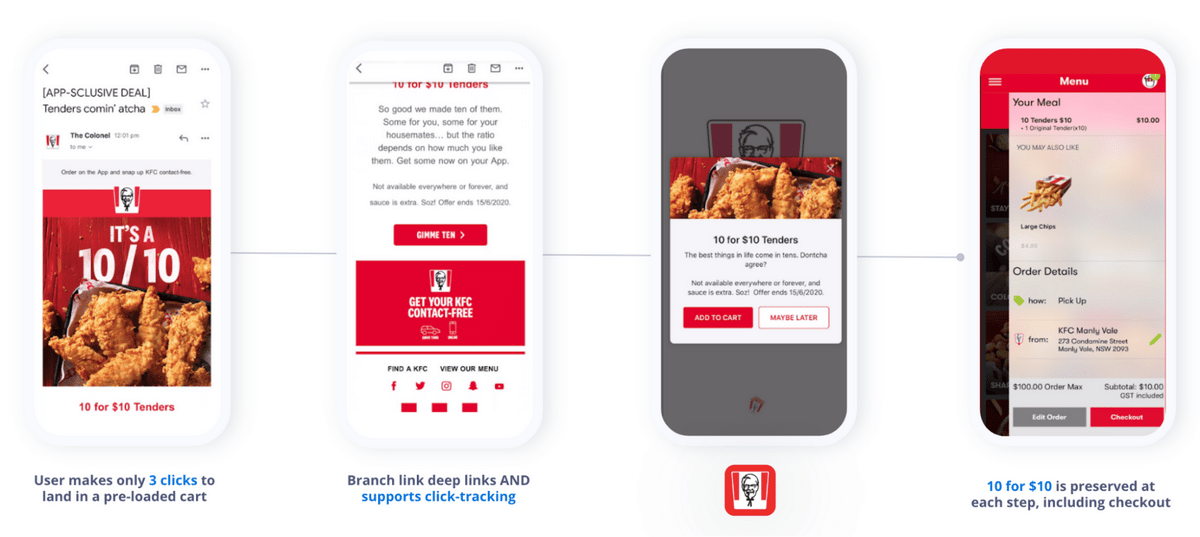
Another strategy is to reengage app users who haven’t used the app recently with unique offers. For example, Burger King filters users who have not used the app in 90 days or more, and offers an additional discount just for them — in-app only.
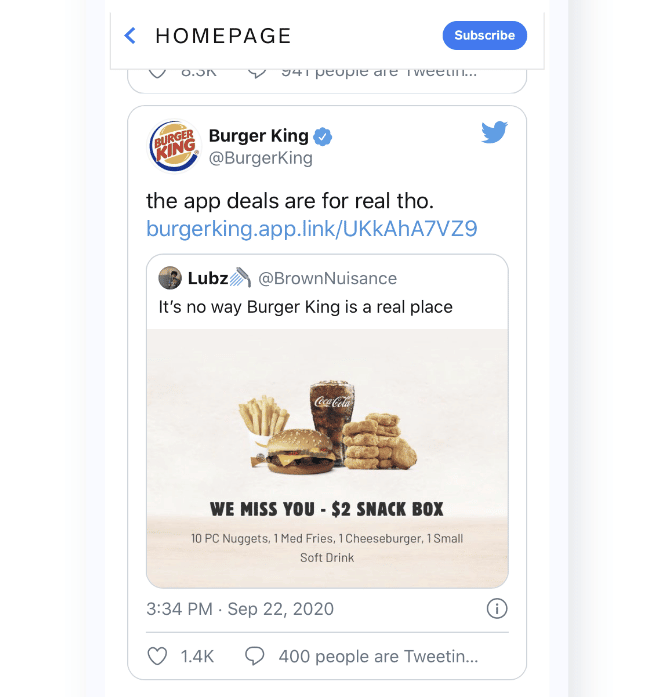
Focus on the customer journey and experience
In today’s world, it’s not enough to get a user to download your app. It’s important to continually harness and optimize value by engaging users throughout their complex journeys, routing them to the right place, and getting insight into what’s working.
The customer journey is probably something you already obsess over, but during a downturn, it’s even more meaningful to understand where your customers are coming from, how long they stay, and different ways to keep them engaged.

For example, if a user clicks a link and they don’t have the app yet, you can use deep links to take them to the app store to download the app. Deep links will then orient the user through a relevant onboarding experience and then take them directly to the content they originally clicked on — all without disrupting their experience. In fact, a frustration-free journey means people are more likely to use the app and become loyal customers over time.

Move to sustainable channels
Sustainable channels like SEO, referrals, organic, and earned media might not have the immediate returns that advertising or paid media have, but the ROI is often much higher and lasts much longer.
SEO
In the past decade, SEO has evolved from trying technical algorithm hacks to creating quality, intent-driven content and engagement. SEO takes time, but the return on the minimal, fixed-cost investment is very high, especially when you convert people into app users.
When you acquire people from ads, they are very transactional. They don’t stay with you very long or purchase as much. Also, the ad brings the person only in that moment that the ad is displayed.

It takes time to get value from SEO, so the ROI is lower in the short term, but over years, SEO is a channel that’s actually sustainable. If you’re trying to build and grow, investing in organic channels is a lot more sustainable and will bring you much higher ROI.
Here are some SEO best practices:
- Learn where you’re already ranking, then create more content like that.
- Crosslink articles and product pages to help Google crawl and index your site; more crawling equals more traffic.
- Reference intent in your CTAs, such as “View Photos in App” versus “Use the App” or “Order Delivery in App” instead of “Continue.” This vastly increases conversion.
- Focus on creating content that matches user intent.
- Experiment with small changes like color, text, and messaging based on the user intent and then keep that context throughout the entire user journey.
Referrals
Referrals aren’t just a sustainable growth channel. They’re actually a really good re-engagement channel. We found that 30% to 40% of all referring user traffic is being sent directly to a previously downloaded app.
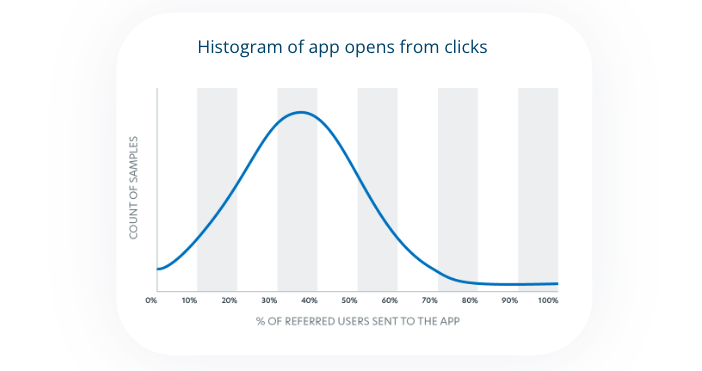
We also found that conversion rates are much higher if you incentivize user, which could include giving away money, discounts, or an actual product.
Here are a few best practices when using referrals:
- Make sure your links can share the content inside your app, and that they deep link through install.
- Make it easy to share on your most used platform by using native share sheets.
- Share a screenshot of the content in addition to a link.
- Enable sharing when a user takes a screenshot by showing a pop-up asking if the user wants to share.
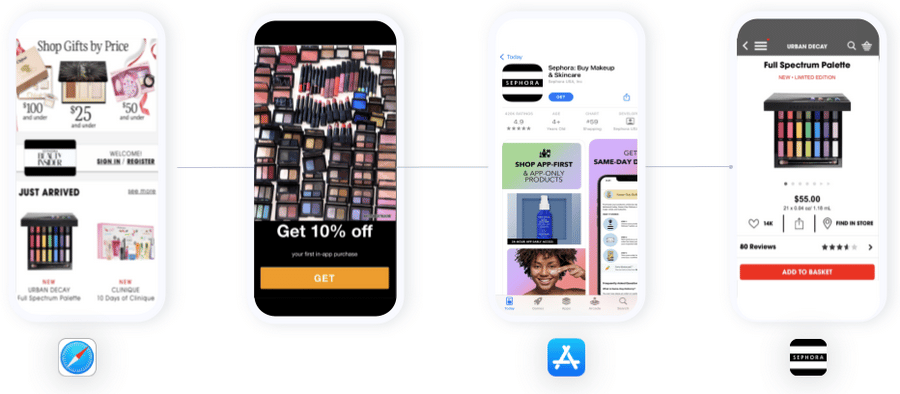
Smart banners
Smart banners are another sustainable way to take people from your website to your app, and the best banners are personalized and customized to the user journey stage.
“If a user comes from Google or SEO, show a small banner so you don’t get penalized. If they come from an email like the Sephora example, you can show a really big banner. If someone just got to your website, don’t show them a banner right away, but if they come to your website for the twelfth time, show them a banner right away because they are a returning user and very likely to download your app. So really think about the user behavior and customize the banners to increase your click through.
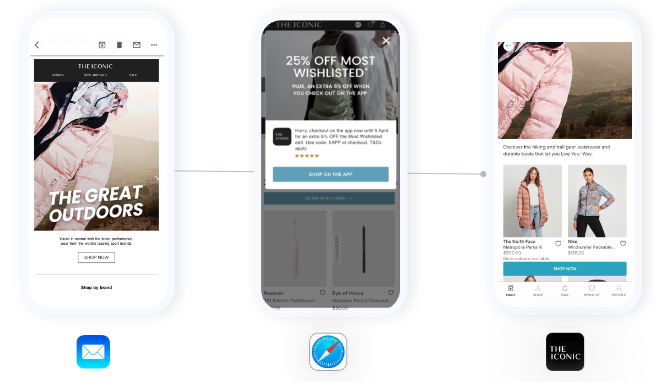
Here are a few more smart banner best practices:
- Personalize messaging and banner type depending on user details. If the user has the app, present pushier messaging and a full-page interstitial.
- If the user doesn’t have the app, show a smaller banner and gentler messaging.
- Personalize by user actions. For a user who purchased, present a full page banner versus a floating button for a browsing user.
Reevaluate your marketing for a recession
Economic uncertainty doesn’t have to mean slashing budgets and throwing out your entire marketing playbook. It really means taking time to reevaluate your programs and channels, and to do this most effectively, you’ll need to measure and compare organic and paid channels. Only then will you understand where to double down on ROI, know how to incentivize users with the right offers, best optimize the customer journey, and reinvest in more sustainable channels.









